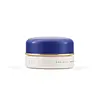What's inside
What's inside
 Key Ingredients
Key Ingredients

 Benefits
Benefits

 Concerns
Concerns

 Ingredients Side-by-side
Ingredients Side-by-side

Water
Skin ConditioningGlycerin
HumectantSqualane
EmollientPropanediol
SolventXylitol
HumectantGlyceryl Stearate Se
EmulsifyingCyclopentasiloxane
EmollientBehenyl Alcohol
EmollientMyristyl Myristate
EmollientSilica
AbrasiveBeeswax
Emulsion StabilisingPaeonia Albiflora Root Extract
Skin ConditioningCamellia Japonica Seed Oil
EmollientCamellia Sinensis Leaf Extract
AntimicrobialLonicera Japonica Leaf Extract
Skin ConditioningCoix Lacryma-Jobi Ma-Yuen Seed Extract
Skin ConditioningChondrus Crispus Extract
Skin ConditioningInositol
HumectantSodium Hyaluronate
HumectantTocopheryl Acetate
AntioxidantCaprylyl/Capryl Glucoside
CleansingCaprylic/Capric/Myristic/Stearic Triglyceride
EmollientTetrasodium Pyrophosphate
BufferingDisodium EDTA
Sodium Acrylate/Acryloyldimethyltaurate/Dimethylacrylamide Crosspolymer
Emulsion StabilisingSodium Dilauramidoglutamide Lysine
HumectantIsostearic Acid
CleansingSorbitan Isostearate
EmulsifyingEthylhexylglycerin
Skin ConditioningAluminum Hydroxide
EmollientParfum
MaskingStearyl Alcohol
EmollientAlcohol
AntimicrobialPhenoxyethanol
PreservativeCI 77891
Cosmetic ColorantCI 77491
Cosmetic ColorantWater, Glycerin, Squalane, Propanediol, Xylitol, Glyceryl Stearate Se, Cyclopentasiloxane, Behenyl Alcohol, Myristyl Myristate, Silica, Beeswax, Paeonia Albiflora Root Extract, Camellia Japonica Seed Oil, Camellia Sinensis Leaf Extract, Lonicera Japonica Leaf Extract, Coix Lacryma-Jobi Ma-Yuen Seed Extract, Chondrus Crispus Extract, Inositol, Sodium Hyaluronate, Tocopheryl Acetate, Caprylyl/Capryl Glucoside, Caprylic/Capric/Myristic/Stearic Triglyceride, Tetrasodium Pyrophosphate, Disodium EDTA, Sodium Acrylate/Acryloyldimethyltaurate/Dimethylacrylamide Crosspolymer, Sodium Dilauramidoglutamide Lysine, Isostearic Acid, Sorbitan Isostearate, Ethylhexylglycerin, Aluminum Hydroxide, Parfum, Stearyl Alcohol, Alcohol, Phenoxyethanol, CI 77891, CI 77491
Water
Skin ConditioningIsopropyl Palmitate
EmollientCetearyl Alcohol
EmollientGlyceryl Stearate
EmollientJojoba Esters
EmollientPEG-100 Stearate
Ceteareth-20
CleansingBenzyl Alcohol
PerfumingHydrogenated Olive Oil
Skin ConditioningOlea Europaea Fruit Oil
MaskingTetrahexyldecyl Ascorbate
AntioxidantPhosphatidylcholine
EmulsifyingAcetyl Tetrapeptide-5
HumectantPalmitoyl Tripeptide-1
Skin ConditioningPalmitoyl Tetrapeptide-7
Skin ConditioningEchium Plantagineum Seed Oil
Skin ConditioningHelianthus Annuus Seed Oil
EmollientCopper Tripeptide-1
Skin ConditioningMagnesium Aspartate
Skin ConditioningZinc Gluconate
Skin ConditioningSodium Hyaluronate
HumectantRosmarinus Officinalis Leaf Extract
AntimicrobialCopper Gluconate
Skin ConditioningN-Hydroxysuccinimide
Skin ConditioningChrysin
Skin ConditioningDisodium EDTA
Dimethicone
EmollientGlycerin
HumectantButylene Glycol
HumectantSteareth-20
CleansingDimethicone Crosspolymer
Emulsion StabilisingSilica
AbrasiveCI 77891
Cosmetic ColorantCI 77491
Cosmetic ColorantWater, Isopropyl Palmitate, Cetearyl Alcohol, Glyceryl Stearate, Jojoba Esters, PEG-100 Stearate, Ceteareth-20, Benzyl Alcohol, Hydrogenated Olive Oil, Olea Europaea Fruit Oil, Tetrahexyldecyl Ascorbate, Phosphatidylcholine, Acetyl Tetrapeptide-5, Palmitoyl Tripeptide-1, Palmitoyl Tetrapeptide-7, Echium Plantagineum Seed Oil, Helianthus Annuus Seed Oil, Copper Tripeptide-1, Magnesium Aspartate, Zinc Gluconate, Sodium Hyaluronate, Rosmarinus Officinalis Leaf Extract, Copper Gluconate, N-Hydroxysuccinimide, Chrysin, Disodium EDTA, Dimethicone, Glycerin, Butylene Glycol, Steareth-20, Dimethicone Crosspolymer, Silica, CI 77891, CI 77491
 Reviews
Reviews

Ingredients Explained
These ingredients are found in both products.
Ingredients higher up in an ingredient list are typically present in a larger amount.
Ci 77491 is also hydrated iron III oxide. It's sole purpose is to give a red/pink hue to products.
Iron III oxides are classified as inorganic chemicals for coloring.
Synthetically created Ci 77491 is considered safer than those naturally found. This is because the synthetically created version may contain less impurities. Iron oxides are generally non-toxic and non-allergenic.
Learn more about CI 77491Ci 77891 is a white pigment from Titanium dioxide. It is naturally found in minerals such as rutile and ilmenite.
It's main function is to add a white color to cosmetics. It can also be mixed with other colors to create different shades.
Ci 77891 is commonly found in sunscreens due to its ability to block UV rays.
Learn more about CI 77891Disodium EDTA plays a role in making products more stable by aiding other preservatives.
It is a chelating agent, meaning it neutralizes metal ions that may be found in a product.
Disodium EDTA is a salt of edetic acid and is found to be safe in cosmetic ingredients.
Learn more about Disodium EDTAGlycerin is already naturally found in your skin. It helps moisturize and protect your skin.
A study from 2016 found glycerin to be more effective as a humectant than AHAs and hyaluronic acid.
As a humectant, it helps the skin stay hydrated by pulling moisture to your skin. The low molecular weight of glycerin allows it to pull moisture into the deeper layers of your skin.
Hydrated skin improves your skin barrier; Your skin barrier helps protect against irritants and bacteria.
Glycerin has also been found to have antimicrobial and antiviral properties. Due to these properties, glycerin is often used in wound and burn treatments.
In cosmetics, glycerin is usually derived from plants such as soybean or palm. However, it can also be sourced from animals, such as tallow or animal fat.
This ingredient is organic, colorless, odorless, and non-toxic.
Glycerin is the name for this ingredient in American English. British English uses Glycerol/Glycerine.
Learn more about GlycerinSilica, also known as silicon dioxide, is a naturally occurring mineral. It is used as a fine, spherical, and porous powder in cosmetics.
Though it has exfoliant properties, the function of silica varies depending on the product.
The unique structure of silica enhances the spreadability and adds smoothness, making it a great texture enhancer.
It is also used as an active carrier, emulsifier, and mattifier due to its ability to absorb excess oil.
In some products, tiny microneedles called spicules are made from silica or hydrolyzed sponge. When you rub them in, they lightly polish away dead skin layers and enhance the penetration of active ingredients.
Learn more about SilicaSodium Hyaluronate is hyaluronic acid's salt form. It is commonly derived from the sodium salt of hyaluronic acid.
Like hyaluronic acid, it is great at holding water and acts as a humectant. This makes it a great skin hydrating ingredient.
Sodium Hyaluronate is naturally occurring in our bodies and is mostly found in eye fluid and joints.
These are some other common types of Hyaluronic Acid:
Learn more about Sodium HyaluronateWater. It's the most common cosmetic ingredient of all. You'll usually see it at the top of ingredient lists, meaning that it makes up the largest part of the product.
So why is it so popular? Water most often acts as a solvent - this means that it helps dissolve other ingredients into the formulation.
You'll also recognize water as that liquid we all need to stay alive. If you see this, drink a glass of water. Stay hydrated!
Learn more about Water